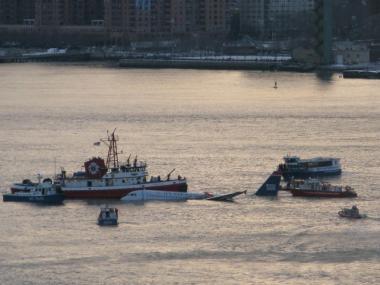
By David Pitt
DNAinfo Editor
MANHATTAN — The US Airways pilot who ditched his plane into the Hudson River last year after a flock of geese crippled both engines actually had the option of returning to LaGuardia Airport, a federal panel investigating the accident has been told.
The manufacturer of the aircraft, an Airbus A320, told investigators that had Capt. Chesley “Sully” Sullenberger decided to attempt a runway landing, the crippled plane had the capability to reach LaGuardia despite a total loss of engine power.
But according to an Airbus document submitted to investigators at the National Transportation Safety Board, the odds of a successful runway landing were not nearly as good as pancaking the plane into the river.

Airbus said that had Sullenberger decided to turn back, he would have had to make the decision almost instantly, leaving no time to gauge the risk that if he missed the runway, the plane might crash into the densely populated neighborhoods that surround LaGuardia.
“Although an emergency return to LaGuardia Runway 13 was technically feasible,” Airbus told investigators, “from a flight performance point of view, the emergency landing on the Hudson seems the most appropriate decision.”
The manufacturer’s assessment, described by the Associated Press, is yet another testament to the quick thinking and sound judgment of Sullenberger, whose actions saved the lives of all 155 passengers and crew in an event that has come to be known as “The Miracle on the Hudson.”
The revelation came in the course of an inquiry by the National Transportation Board, which is working to come up with recommendations for the Federal Aviation Administration on how to minimize the consequences of bird strikes, especially those involving large birds like geese and pelicans.
Among the steps under consideration, officials said, is requiring airlines to begin equipping their planes with bird-proof engines. Another idea is to have pilots undergo mandatory flight-simulator training in water landings.


















